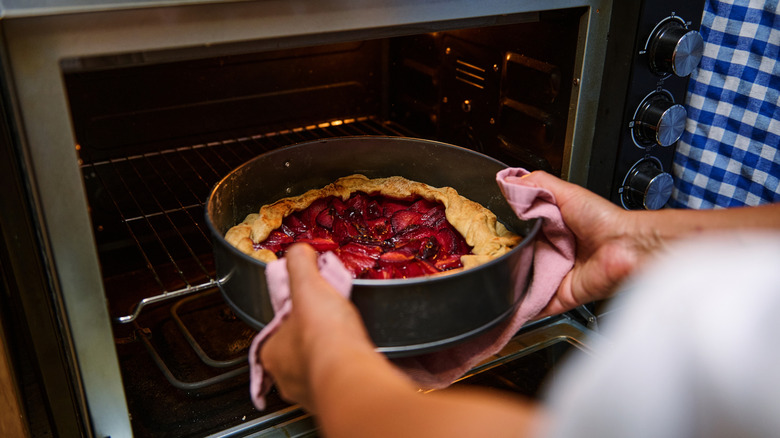If you’ve ever stuck a too-full pan in the oven and crossed your fingers, only to have it spill over and make a mess on the bottom of the oven, then you’re probably familiar with the aluminum foil hack: Simply tear off a sheet and stick it on the bottom of the oven to throw away once it gets messy. But is this really a good idea?
There are some pretty great uses for aluminum foil around the kitchen, but lining your oven is a big no-no. Placing it directly on the oven floor (rather than one of the racks) can scratch or chip the surface. When you line the bottom of the oven (or cover an entire rack) with a large sheet of foil, it can also block the airflow or trap the heat, which can result in uneven cooking or even overcooking. Recommended oven temperatures are carefully determined by recipe developers to create the ideal results; lining your oven with aluminum foil makes it harder to produce perfectly cooked dishes. Foil can also damage the oven itself. It takes an awful lot of heat to melt aluminum foil (the melting point is 1,220 degrees Fahrenheit), but if it overheats from coming in direct contact with the heating element, the resulting damage to your oven can be permanent. But it doesn’t take melted aluminum foil to damage your oven — the presence of the foil can raise the temperature enough to burn out the heating element.
You don’t need foil to save the day
If the reason you line your oven with foil is to catch drips and keep the oven clean, you have a couple of alternatives. The most obvious is using a pan that is big enough for the job. While food cooks, it can expand and liquid inside can bubble as it heats up; it’s necessary to have a pan that contain this without spillage, which can create a stinky, smoky mess on the bottom of the oven and possibly catch fire. There are definitely certain pans that every home baker should have, but it’s equally important to select the right size pan.
There are times, however, when the size of the pan has nothing to do with spillage. Take baking sweet potatoes, for example: When you bake them, you should always poke them to let steam escape while the inside heats up so they don’t explode. Failing to do so is one of 16 sweet potato cooking mistakes you want to avoid. But, when you do that, the juices inside leak out during the cooking process — aluminum foil could keep that mess from sticking to the bottom of the oven, but you can also avoid the problem by simply placing your taters on a cookie sheet while they bake.






